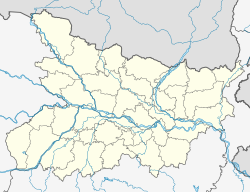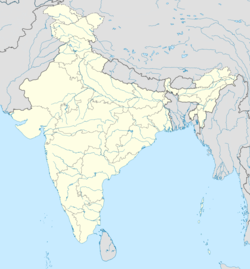|
Barh
Barh is a sub division of Patna District. It is a town and one of the 6 sub-division of Patna district, Bihar in India. It is located on the southern bank of the Ganges.[1] PopulationAccording to the 2011 Census of India[update], Barh had a total population of 316,348 residents, with 162,354 males and 153,994 females.[2] AdministrationThe Barh sub-division (Tehsil) is headed by an IAS or state Civil service officer of the rank of Sub-Divisional Magistrate (SDM). BlocksThe Barh Tehsil is divided into 7 Blocks, each headed by a Block Development Officer (BDO). List of Blocks is as follows:
PoliticsBarh is a part of the Barh Assembly constituency under the Munger Lok Sabha constituency. It is also the oldest subdivision in India.[3] HistoryPeace Treaty of BarhIn 1495, after the sack of Patna, Sikandar Lodi advanced towards Bengal, but a non-aggression pact was made between the Delhi and the Bengal armies. It was decided that the territory to the east of Barh would be controlled by Bengal's ruler, while those to the west would be controlled by the Delhi empire.[4] SaraiDuring the Mughal period, Barh had a large sarai with 200 rooms for travelers/traders built by Sher Shah Suri.[5] Rennell's SurveyIn 1776, James Rennell, also called the "Father of Indian Geography", surveyed Bengal and listed prominent destinations.[6]   Barh Railway lineOn 10 November 1877, the Barh railway station was opened to the public.[7] PlagueBetween the 1890s to 1910, Barh and Patna were afflicted by the plague. It is believed that the 1898 plague came by sea by rats aboard infected ships, though it first appeared in the British India Steam Navigation Company's wharf.[8] The two main factors for the spread of the plague were believed to be the high presence of rats and houses with poor hygiene and bad ventilation.[8] The population of the extended Barh subdivision decreased from 408,256 in 1891 to 365,327 in 1901 due to the plague.[9] Sati incidentIn 1928, Sampati Kuer, a young widow from Berhna village, committed sati on the funeral pyre of her deceased husband. The British government suspected foul play and sentenced 10 people to prison, including her brother Murlidhar Pande, as sati was outlawed 100 years earlier by the British government.[10] NTPC BarhNTPC Limited is India's largest power-generating company. The former Prime Minister of India, Atal Bihari Vajpayee, laid the foundation stone of the main plant of stage 1 of NTPC Barh Super Thermal Power Station on 6 March 1999.[11] List of villagesThe list of villages in Barh Block (under Barh Tehsil) is as follows:
References
|
||||||||||||||||||||||||||||||||||||||||||||||||


